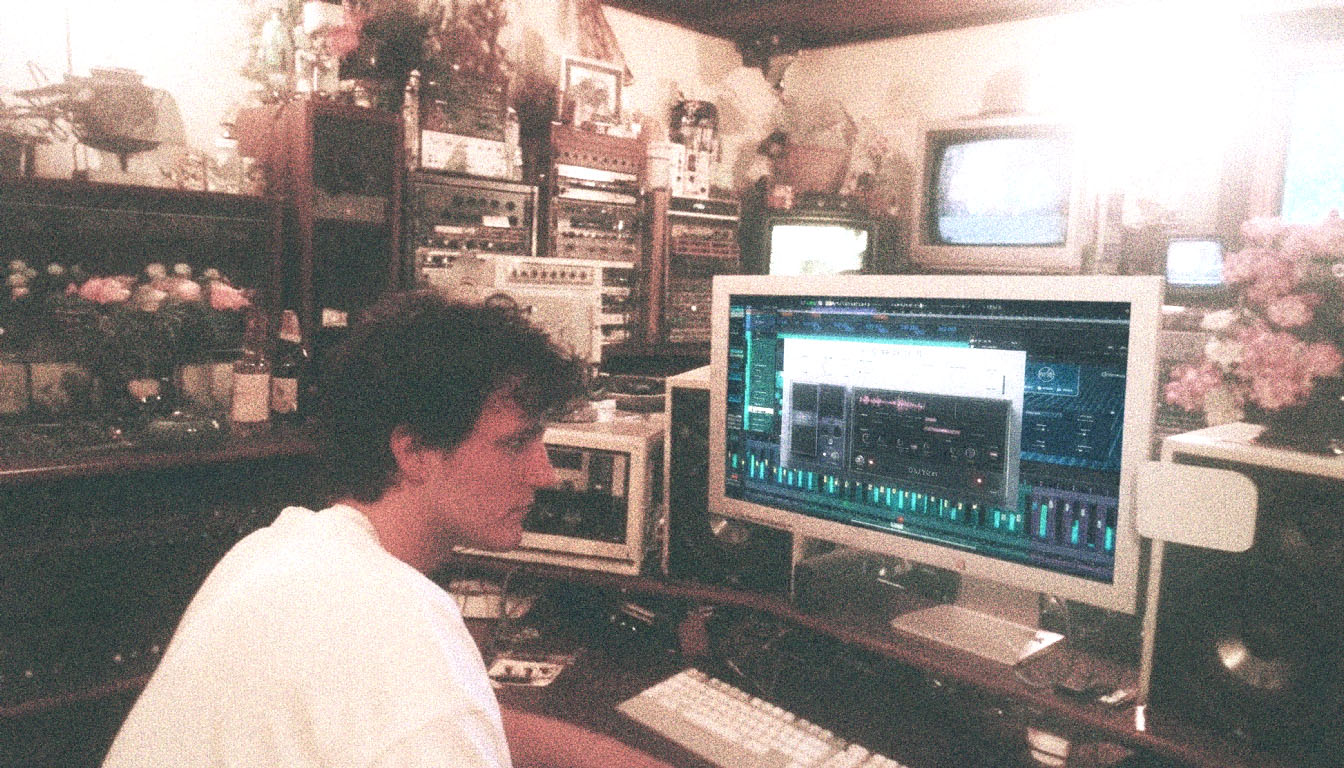
Mixing vs Mastering: What Metal Producers *Actually* Need To Know
Nail The Mix Staff
You’re deep in your DAW, guitars are chugging, drums are pounding, and you’re wrestling your latest metal masterpiece into shape. You hear terms like "mixing" and "mastering" thrown around all the time. You know they're different, but what’s the real deal, especially for us modern metal producers? Why does one come before the other, and how do they both contribute to that skull-crushing, polished sound we’re all chasing?
In today's metal scene, the bar for production quality is sky-high. Even local bands are dropping tracks that sound insanely polished – a far cry from some of the rougher (though beloved) demos of the 90s and early 2000s. That means you need to understand every step of the process. The good news? Resources like our YouTube channel and Nail The Mix are here to guide you, and with tools like Neural DSP amp sims and Get Good Drums, pro-level sounds are more accessible than ever.
So, let’s dissect mixing vs. mastering, metal-style.
What the Hell is Mixing, Anyway?
Think of mixing as taking all the individual recorded tracks – your drums, bass, quad-tracked 8-string guitars, screaming vocals, maybe even those weird synth layers you borrowed from a K-Pop track (hey, modern metal embraces it!) – and blending them into one cohesive, powerful stereo track. This is where the song truly comes alive and starts sounding like a record.
The Nitty-Gritty of a Metal Mix:
- Balancing Levels & Panning: This is foundational. Getting the kick, snare, guitars, bass, and vocals to sit right against each other. Are those low-tuned guitars (shoutout to Meshuggah for pioneering that sound!) overpowering the kick? Is the bass audible beneath those Drop A chugs? This balance is so important we have a whole guide on how to balance metal guitars and bass. Panning creates the stereo image – wide guitars, centered kick, snare, and vocals, etc. You might use a utility plugin like FabFilter Pro-Q 3 in mono to check your low-end balance initially.
- EQ – Carving Your Space: This is critical in dense metal mixes. With everything loud and often occupying similar frequency ranges, EQ is your scalpel.
- Guitars: You’re likely high-passing to remove unnecessary rumble, maybe a classic mid-scoop (think 300Hz-1kHz) to make room for vocals and snare, but also surgical cuts to tame fizz (that nasty 5kHz-10kHz harshness). Check out our EQ strategies for mixing modern metal for more on this. Plugins like FabFilter Pro-Q 3 or even the stock EQ in your DAW can do wonders here. Don't forget to check phase relationships if you're multi-micing amps or using techniques like the Fredman micing setup (two SM57s, one angled).
- Drums: Modern metal drums are often sample-replaced or heavily processed. You’ll EQ individual shells to enhance attack (e.g., boosting around 5-8kHz on a snare for crack) and body, and cut boxiness (e.g., 400-600Hz on a kick). For a deep dive, check out Joey Sturgis’s method to EQ metal kick drums. Using something like an SSL E-Channel strip plugin (from Waves or Plugin Alliance) on drum shells is a classic move.
- Bass: Ensuring the bass works with the kick is paramount. Sidechain compression is common, but so is careful EQing – maybe a cut in the bass where the kick’s fundamental sits, and a boost slightly above or below.
- Vocals: High-passing to remove rumble, taming harsh sibilance (using a de-esser like the FabFilter Pro-DS or Waves Sibilance), and adding presence or air (e.g., boosting around 2-5kHz for intelligibility and 10kHz+ for air).
- Compression – Shaping Dynamics & Adding Punch: Compression controls dynamics, adds sustain, and can seriously beef things up.
- Drums: Often, a punchy compressor like an SSL G-Comp style plugin (Cytomic The Glue, Waves SSL G-Master Buss Compressor) on the drum bus can make them hit harder. Individual drums, especially kick and snare, will get their own compression to shape their transient and sustain – an 1176-style FET compressor like the Arturia Comp FET-76 or Waves CLA-76 is a go-to for aggressive drums. Want to learn more about taming those transients? Our metal compression secrets guide has you covered.
- Vocals: Multiple stages of compression are common for metal vocals. First, to even out performance (maybe an LA-2A style opto like the Waves CLA-2A), then something faster and more aggressive (like that 1176 again) to pin them in place.
- Guitars & Bass: Often compressed to even out palm mutes and sustained notes. A Distressor (like the Empirical Labs hardware or Softube Empirical Labs Mike-E Comp) can be killer on heavy guitars and bass.
- Effects – Adding Depth & Vibe: Reverb, delay, saturation, chorus – this is where you add atmosphere.
- Reverb: Short room reverbs (like ValhallaRoom or FabFilter Pro-R) can give drums a sense of space without washing them out. Longer, darker reverbs or plates (Valhalla VintageVerb) for vocals can sound epic.
- Delay: Slapback delays for vocals, longer rhythmic delays for guitar leads or vocal throws (Soundtoys Echoboy is a legend here).
- Saturation: Plugins like FabFilter Saturn 2 or Soundtoys Decapitator can add harmonic richness and aggression to bass, vocals, or even the drum bus. This can help elements cut through on small speakers.
- Automation: This is where your mix breathes. Automating volume faders, pan positions, effect sends (e.g., making a delay louder on the last word of a phrase) makes the mix dynamic and engaging. This is especially true for modern metal that might have multiple genre shifts within one song, like you hear from bands like Falling in Reverse or Bring Me The Horizon.
The goal of mixing? To create a balanced, clear, impactful, and emotionally resonant stereo file that represents the artist’s vision. It’s about making sure every part has its place and contributes to the overall power of the song.
Okay, So What’s Mastering Then?
Mastering is the final step in audio post-production. You’ve got your amazing stereo mix. Now what? Mastering is about taking that mix and preparing it for distribution, ensuring it sounds as good as possible on all playback systems – from earbuds to club PAs to car stereos. It’s less about fixing individual elements (that’s mixing’s job) and more about overall polish and quality control.
The Mastering Engineer's Toolkit & Goals:
- Fresh Ears & Perspective: A mastering engineer (ideally a different person than the mixer) brings a fresh set of ears and a highly treated listening environment. This objectivity is invaluable.
- Final EQ Adjustments: These are usually broad, gentle strokes, not the surgical cuts you make in mixing. Maybe a slight low-end boost for warmth, a gentle lift in the highs for air, or a subtle dip in a problematic area that only becomes apparent on high-end monitoring. Think tools like a Manley Massive Passive (hardware or UAD plugin) or FabFilter Pro-Q 3 in linear phase mode.
- Stereo Widening/Enhancement: Subtly enhancing the stereo image if needed, using tools like iZotope Ozone Imager. Be careful here – too much can sound phasey and weird.
- Overall Compression/Limiting (The Loudness Factor): This is a big one for metal. Mastering often involves some final compression to glue everything together and then limiting to bring the overall level up to competitive commercial loudness. This is where plugins like FabFilter Pro-L 2, iZotope Ozone Maximizer, or even specialized clippers like Kazrog KClip 3 come into play. The choice between limiting vs. clipping is a key decision in modern metal mastering.
- Attack/Release: On a limiter, faster attack times can catch peaks more aggressively but might dull transients if overdone. Slower release times can make things sound smoother and louder, but too slow can cause pumping. Experimentation is key. For metal, you often want to preserve punch, so settings need care.
- Dithering & Bit Depth/Sample Rate Conversion: Preparing the track for its final format (e.g., 16-bit/44.1kHz for CD or streaming).
- Sequencing & Fades: If it’s an album, the mastering engineer arranges the tracks in order, sets the spacing between them, and adds fades.
- Metadata: Embedding ISRC codes, track titles, artist info, etc.
The goal of mastering is to optimize the mix for playback across all systems and distribution platforms, ensuring sonic consistency if it’s part of a larger project like an EP or album. To see a pro workflow, check out Joel Wanasek’s metal mastering chain breakdown.
Mixing vs. Mastering: The TL;DR
| Feature | Mixing | Mastering |
|---|---|---|
| Focus | Individual tracks, song elements | Final stereo mix (or stems) |
| Goal | Create a cohesive, balanced, impactful song | Optimize the song for playback, loudness, consistency |
| Tools Used | Surgical EQs, creative compressors, FX, automation | Broad EQs, transparent compressors, limiters, imagers |
| Mindset | Creative, problem-solving, detailed | Objective, quality control, broad strokes |
| Who Does It | Mixing Engineer | Mastering Engineer (ideally a different person) |
Why Modern Metal Needs That "Slammed" Master (But Not Wrecked!)
You’ve heard it – modern metal productions are LOUD and PUNCHY. That expectation for highly polished, impactful sound often comes from a combination of a great mix and a master that’s been pushed hard, but intelligently. A "slammed" master, where limiters like FabFilter Pro-L 2 are working to maximize loudness, can add that final layer of aggression and energy that makes a metal track feel competitive.
Plugins like Softube’s Weiss MM-1 Mastering Maximizer or even some subtle saturation from something like a Black Box HG-2MS on the master bus can add density and perceived loudness without just turning it up. The key is that the mix itself has to be fantastic. You can't polish a turd, as they say. If your mix is muddy, full of harsh frequencies, or lacks dynamics, aggressive mastering will only make it worse. This is why at Nail The Mix, we spend so much time focusing on getting the mix right, watching pros like Joey Sturgis, Eyal Levi, and Joel Wanasek build mixes from scratch. A great mix gives the mastering engineer (or you, if you’re mastering your own stuff) the best possible foundation to work from.
Can You Mix AND Master Your Own Metal?
Short answer: Yes, especially if you're a bedroom producer or on a tight budget.
Long answer: It’s challenging. The biggest hurdle is objectivity. After spending hours, days, or weeks mixing a track, your ears get accustomed to it. You lose perspective. A dedicated mastering engineer brings fresh ears and a room specifically tuned for mastering decisions.
If you are mastering your own tracks:
- Take a Break: Seriously. Finish your mix, then step away for at least a day, preferably longer, before you even think about mastering.
- Reference Tracks: Use professionally mixed and mastered metal tracks in a similar subgenre. A/B constantly. How does your low end compare? Your vocal level? Your overall loudness and punch?
- Good Monitoring: If your room isn't acoustically treated, invest in good mastering-grade headphones like Audeze LCD-Xs or use room correction software with good monitors. Slate VSX can be a lifesaver here.
- Less is More: Don't try to fix mix problems in mastering. If the snare is too quiet, go back to the mix. Mastering is for enhancement, not reconstruction.
- Watch the Meters: Don’t just push your limiter into oblivion. Aim for competitive loudness, but excessive limiting kills dynamics and can introduce distortion.
Nail The Difference, Nail The Mix
Understanding the distinct roles of mixing and mastering is crucial for any modern metal producer. Mixing is where you craft the song's soul from individual parts – balancing, EQing, compressing, and adding effects to bring out the aggression, clarity, and emotion. Mastering is the final sheen, ensuring your track thunders out of any speaker with consistency and professional polish.
The journey to a pro-sounding metal track involves nailing both stages. It’s about dealing with those low-tuned 8-string guitars that could easily be mistaken for bass, making sure programmed or heavily sample-replaced drums (like those from GetGood Drums or Superior Drummer 3) hit like a battering ram, and ensuring every element sits perfectly in a dense, powerful soundscape.
If you’re serious about getting your metal productions to that pro level, understanding not just what mixing and mastering are, but how to do them effectively for modern metal is key. That’s why we created resources like our comprehensive guide, Unlock Your Sound: Mixing Modern Metal Beyond Presets.
And if you want to see exactly how world-class producers handle these challenges, from initial track balancing in the mix to preparing for that final mastering stage, Nail The Mix puts you in the room with them. Every month, you get the multitracks and watch the pros mix massive songs, explaining every decision. It’s the ultimate way to level up your game.
So, get back to your DAW, apply these principles, and make some killer metal!
Get a new set of multi-tracks every month from a world-class artist, a livestream with the producer who mixed it, 100+ tutorials, our exclusive plugins and more
Get Started for $1





